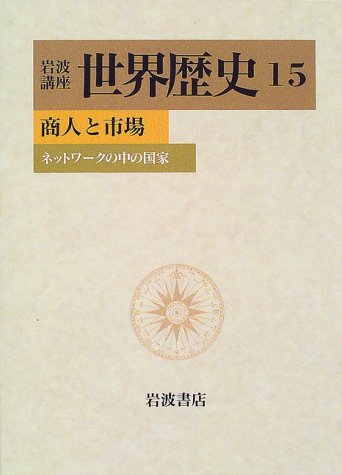3 0 0 0 極細解剖針の作り方
- 著者
- 出口 博則 松井 透
- 出版者
- 日本蘚苔類学会
- 雑誌
- 日本蘚苔類学会会報 (ISSN:02850869)
- 巻号頁・発行日
- vol.4, no.7, pp.117-118, 1987
2 0 0 0 商人と市場 : ネットワークの中の国家
1 0 0 0 OA 17世紀インドのアイ産と政治權力 イギリス東インド會社史料の一檢討
- 著者
- 松井 透
- 出版者
- 東南アジア学会
- 雑誌
- 南方史研究 (ISSN:2185050X)
- 巻号頁・発行日
- vol.1959, no.1, pp.37-55,A7, 1959-06-30 (Released:2010-10-22)
In the first half of the seventeenth century, indigo was especially sought after by the factors of the East India Company at Sarkhej, Biana and many other places in India. These European merchants wrote in their transactions a lot of letters, from which we can form an idea of its producers, its buyers, and the Mughal authorities who oppressed and exploited them. W. H. Moreland, in his celebrated “From Akbar to Aurangzeb”, gave some instances of the “official interference”, which had put a great hindrance on the trade in indigo, and which he considered to have been one of the two characteristics that distinguished the Indian markets in general from those of modern times (pp. 113-114, 146-149). No doubt he is right in saying so, but after minutely investigating a number of such instances, we can advance a step farther and analyze the nature of this “interference” and oppression of the indigo trade. The author's conclusion may be summed up as follows.1. There seems to have been a considerable local disparity in the social relations between the cultivators of the indigo plant and the manufacturers of the dye. Nevertheless, the production had to start as an agriculture in any case, and land revenue to be levied by the officials ensued. Although indigo was among the most valuable crops in those days, the revenue demand on it was so high, that there was scarcely any profit left for the peasants who cultivated it, causing them sometimes to abandon this valuable crop. The revenue demand was thus the first and perhaps the most fundamental oppression by the Mughal authorities.2. When Moreland talked about his “official interference”, he had probably in his mind chiefly those events which would fall under the second category, oppression When entering the market as buyer or seller, a Mughal official often claimed priority over all the merchants, and this claim being, in some degree, admitted by usage, he could bring about a standstill in the market and keep it by force till his dealings were carried out as he pleased. Under this official right of priority, the trade in indigo, particularly that in Gujarat, repeatedly experienced heavy oppression and exploitation, severely affecting the producers as well as the merchants.3. It was usually with the concrete intention of buying or selling that the controlling power of Mughal authorities over the indigo market was wielded. An official in the market was a whimsical merchant wearing a sword at his side. It is true, an abstract power of the sovereign to confer an exclusive privilege or a right of monopoly, not as a temporary measure but as a lasting system, was not quite unknown in those days, but so far as the indigo trade was concerned, there was only one instance of this kind, and even this was a rather exceptional case, not typical at all. The Emperor granted a monopoly without full confidence, partly because it was not well rooted in the social usage, and to his regret, the design failed.4. Under. all these burdens, the beautiful blue colour was produced, sold and brought to the European market. The producers were living in utter poverty, swarmed upon by the parasites who knew no satiety. Their desire and demand that had no connection with production were really a great handicap, when rivalry began with the indigo planters of the West Indies. This inability on the part of the ancient Indian industry to meet the challenge was at least one reason for its defeat, a point overlooked by Moreland (p. 113). It will be of interest to consider how this handicap was changed when India resumed her indigo production under the colonial government in the nineteenth century.
1 0 0 0 現代イギリスにおけるインド人移民社会の総合的研究
本年度の研究計画の目的は, 昨年度イギリスにおいて実施した調査によりえられたデータ,とりわけ面接調査票のデータを整理し, 一定の解析をおこなうことによって,今後の調査,研究に役立てることにあった. したがって, 本年度の研究成果はあくまでも中間的総括の域を出ないものであることを,まずことわっておきたい.1.研究成果の概要データの整理,解析によってえられた新たな知見,成果の要点は次の通りである.(1)第二次大戦後,イギリス植民地体制の崩壊にともなって,英領植民地各地に展開していたインド人移民社会は大きな変動を豪り,植民地本国イギリスへの大量の移動をひきおこすとともに,インド亜大陸からイギリスへの移住もまた激増した. こうしたインド人移民の大きな二つの流れに応じて,イギリスにおけるインド人社会の間にさまざまな面で大きな差異がみられることが明らかとなった.(2)イギリスにおけるインド人移民社会の形成,発展の歴史,およびインド人移民社会の構造,インド人移民の組織,政治,経済,社会,宗教活動などを,ある程度解明しえた. 殊にインド人移民のカースト,宗教組織の果す役割の重要性が注目される.(3)インド人移民社会の形成,発展は,イギリスの社会に大きなインパクトを与えつつあるが,他方インド人移民社会は,イギリス社会の影響を蒙り,一定の変容を受けながら,移民社会独自のアイデンティティを形成しつつある. そこにみられるのは,移民社会の受入れ国社会に対する一方的な同化の過程ではなく,多文化社会という新らしい社会の形成にむけての,共存的発展の過程であると考えられる.2.今後の研究の展望これまでの研究によってえられた新たな知見の一つは,インド人移民にとって必らずしもイギリスが最終的な移民先ではなく,かなりのインド人移民がイギリスを経由して,さらに他の英連邦諸国,とりわけカナダ,オーストラリア,あるいはアメリカ合衆国へ再移住しているという事実であった. われわれは今後の研究において,こうした再移住の過程を明らかにするとともに,インド人移民社会それ自体の変容と,受入れ国の社会にあたえるインパクトの解明を試みるつもりである. また,移民の主な送り出し地域の一つであるインドのグジャラート地方の調査を実施することによって,移民送出のメカニズム,海外移民の存在によって,この地方の蒙るインパクトを解明したいと考えている.
